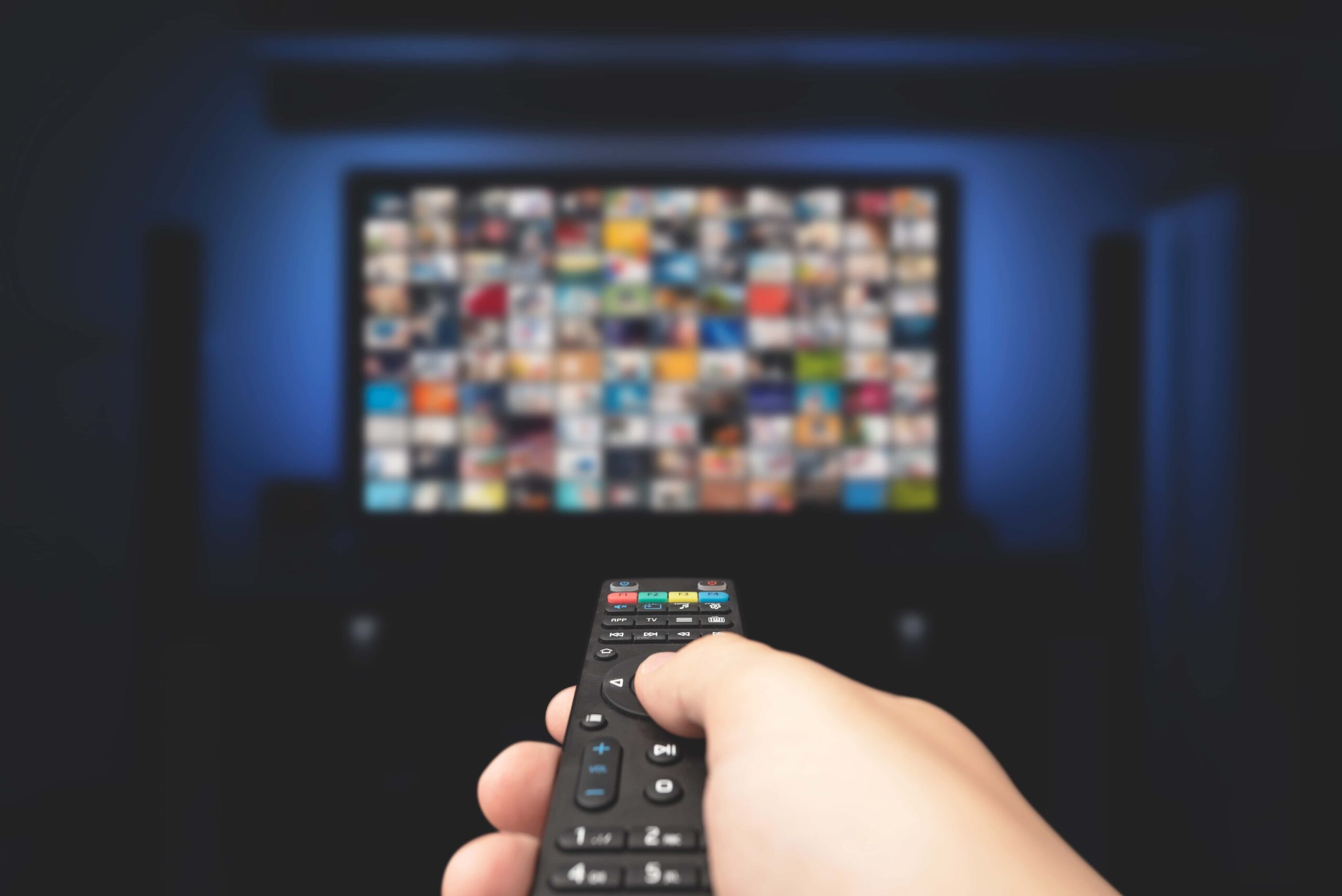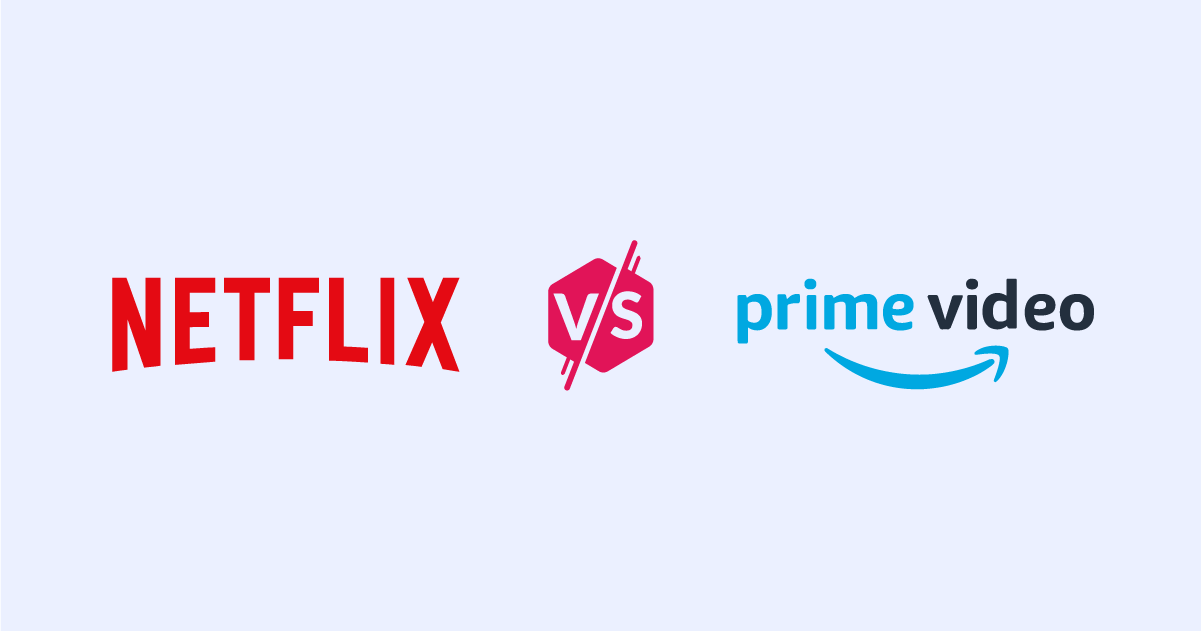4K Streaming Guide
Learn the basics of 4K video streaming before signing up for a new streaming service.
Dec 9, 2022 | Share
Streaming Guides
You need to watch TV and movies in 4K to get the ultimate experience, right? Or is it 8K now? What about UHD? Seriously, what a headache. With media companies racing to offer the best in online video, finding the highest quality picture is like aiming at a constantly moving target.
If you’re not up to speed with the cutting edge of online video, here’s what you need to know to stream 4K content from Netflix, Hulu, Max, YouTube TV, and similar services.
What is 4K streaming?
You stream in 4K when you watch any video with a 3,840×2,160 resolution distributed by Netflix, YouTube, Max, and similar services. The video downloads in small chunks that are played immediately and then deleted.
Most streaming services currently offer 4K as the highest resolution option. In fact, most original content from services like Amazon Prime Video and Disney+ is available in 4K, and that trend is likely to continue.
But not all content is available in 4K. When streaming video, the resolution depends on the device, the service, your internet connection, and the video’s native resolution. There are a lot of different resolutions you’re likely to see, so take a look:
| Resolution | Formal name | Size in Pixels | Examples |
|---|---|---|---|
| 6480p (12K) | 12K Ultra High Definition (UHD or Ultra HD) | 12,288×6,480 | Very highest consumer cameras |
| 4320p (8K) | 8K Ultra High Definition (UHD or Ultra HD) | 7,680×4,320 | YouTube, PS5, Xbox Series X |
| 2160p (4K) | 4K Ultra High Definition (UHD or Ultra HD) | 3,480×2,160 | Most streaming services, 4K Blu-ray |
| 1440p (2K) | Quad High Definition (QHD or Quad HD) | 2,560×1,440 | QHD monitors, smart phones |
| 1080p (FHD) | Full High Definition (FHD or Full HD) | 1,920×1,080 | Blu-ray, HDTV, Xbox |
| 720p (HD) | High Definition (HD) | 1,280×720 | Preferred Twitch streaming resolution |
| 480p (SD) | Standard Definition (SD) | 640×480 (4:3) | TV broadcasts, NTSC-region DVD |
| 480p (SD) | Standard Definition (SD) | 720×480 (3:2) | TV broadcasts, NTSC-region DVD |
| 360p (SD) | Standard Definition (SD) | 640×360 | Low-quality video |
Want the smoothest 4K experience?
You’ll need a fast plan to stream more than one 4K video simultaneously. Enter your zip code below to see what’s available in your area.
How much speed do you need for 4K streaming?
The internet speed you need to stream a 4K video depends on how it’s compressed and delivered across the internet—raw video is just huge, so it must be packed like a zip file before it’s sent to you. A rate of 25 Mbps is average for a single 4K stream, so if you have a 100 Mbps plan, the stream uses a quarter of your entire bandwidth.
But if three other household members decide to watch 4K content too, you’ll hit the plan’s 100 Mbps limit and leave nothing else for other devices and applications. We suggest a plan that’s faster than 100 Mbps if this scenario applies to you—a fast upload speed doesn’t matter in this case.
Bandwidth isn’t your only requirement, however.
How much data do you need for 4K streaming?
You download video data in small chunks each time you stream, so you can easily burn through a month’s worth of data if your internet provider enforces a monthly data cap, like Xfinity and Mediacom. You may end up with overage fees that cost more than the service you use to stream video.
So, how much data does a 4K stream use? Nearly 16 GB per hour if you stream from YouTube, but only 7 GB per hour if you stream from Netflix. Again, the amount of data you use depends on the platform, but you’ll use less data streaming a 4K movie than if you bought the movie and downloaded it to your device—Avengers: Endgame reaches up to a hefty 105 GB!
Here’s a chart with the average per-hour download amounts to give you an idea:
| Format | Amount per hour |
|---|---|
| 4K UHD | 7,200 MB (7.2 GB) |
| Quad HD | 3,000 MB (3.0 GB) |
| Full HD | 1,500 MB (1.5 GB) |
| HD | 900 MB |
| SD | 700 MB |
Satellite internet connections have especially restrictive data caps, so it’s often better to have a separate satellite TV provider to watch video. Most other connections give you enough data to stream on a fairly regular basis, but we suggest getting an unlimited data plan for true stress-free streaming.
For more information, see our guide to speed requirements for streaming services.
Looking for an internet plan that can handle 4K video?
Most plans provide enough internet speed for you to stream a few 4K videos simultaneously without interruption. But if your 4K stream constantly buffers, you may need a faster plan. See what’s available in your area.
What else do you need for 4K streaming?
To stream 4K video, you need two things: a 4K device and a 4K streaming service.
4K streaming devices
First, you need devices that support 4K. We can split these devices into two groups: 4K output and 4K input.
4K input
You need a screen that supports a 4K resolution. It can be a smart TV, a desktop monitor, or a laptop screen. Most phones and tablets don’t have a resolution that high, but you can get a good 4K TV fairly cheap. Here are a few examples:
| TV | Size (in inches) | Price* | Order online |
|---|---|---|---|
| Amazon Fire TV | 43 | $279.99 | View on Amazon |
| Toshiba 43C350KU | 43 | $249.99 | View on Amazon |
| Samsung AU8000 | 43 | $327.99 | View on Amazon |
| Hisense 55A6G | 55 | $309.99 | View on Amazon |
* Amazon.com prices (as of 05/23/22 10:37 MST). See full disclaimer.
4K output
This group consists of devices that receive the 4K video from the internet and relays it to a 4K screen. Here are a few examples to get you started:
| Device | Price* | Order online |
|---|---|---|
| Chromecast with Google TV | $49.99 | View on Amazon |
| Apple TV 4K | $169.98 | View on Amazon |
| Fire TV Cube | $69.99 | View on Amazon |
| Nvidia Shield TV Pro | $199.99 | View on Amazon |
| Roku Ultra | $99.99 | View on Amazon |
| TiVo Stream 4K | $39.99 | View on Amazon |
* Amazon.com prices (as of 05/23/22 10:37 MST). See full disclaimer.
4K streaming services
Once you have the equipment you need to stream and watch 4K video content, the next step is to get a compatible streaming service. Most have some 4K offerings, though these sometimes come at an extra cost.
For example, Netflix customers need the premium plan to watch 4K content. Amazon Prime Video has many 4K shows, but some are available only to rent or buy. Other services, such as Disney+, Hulu, and Starz, include their 4K content in standard monthly subscriptions.
Do you really need 4K?
You don’t need 4K, but it certainly looks a lot better than SD and HD resolutions. A 4K video has sharper edges, less noise, and better colors. If you want the ultimate viewing experience, 4K is the way to go—for now.
If you’re upgrading your TV or some other streaming device, you should definitely get something that supports 4K video. There’s enough 4K content out there already to make upgrading worth it, and most new TV shows and movies moving forward will be available in 4K.
On the other hand, if you’re on an internet plan with low data caps, you might not want to watch content in 4K, even if your device can handle it. Most streaming services automatically choose the highest resolution available based on your connection speed, but this can usually be manually set to a lower resolution, making your data last much longer.
What about 8K video?
4K video is still cutting-edge technology, but 8K is the next level. You can already find 8K televisions on the market, but there’s no need to upgrade just yet. Most streaming services don’t have 8K content, nor can you purchase and stream 8K content from Google Play and the iTunes Store.
However, YouTube does have some 8K content, but that’s mostly a handful of scenic landscape flyovers and peaceful nature videos. They’re great proof-of-concept videos but probably not worth shelling out several thousand dollars for new equipment.
Some newer game consoles like the PlayStation 5 and the Xbox Series X also support 8K content, but they’re similarly limited by the lack of available 8K games and video.
FAQ about 4K streaming
What does 4K mean?
4K refers to a video resolution of 3,840 pixels wide and 2,160 pixels tall. 4K offers a sharper image quality than Full HD video, which has a resolution of only 1,920 pixels wide and 1,080 pixels tall.
What’s the difference between 4K and UHD?
4K, Ultra High Definition (UHD), and 2160p refer to the same resolution of 3,840×2,160 pixels. These names are used interchangeably, and all mean the same thing.
How much data does 4K streaming use?
The amount of data you use to stream 4K content depends on the platform and how it encodes video. The average amount is 7 GB per hour per stream, but you may use up to 16 GB per hour per stream. You also have to consider all other devices and apps that require data while you stream, like another 4K video stream, web browsers, game consoles, and so on.
We suggest switching to an unlimited data plan if your streaming habits frequently have you passing your data cap.
Why is 4K resolution 2160p?
Since the days of analog broadcasts and CRT TVs, resolution has always been measured in rows and columns. Like a printed picture, the image begins in the top left corner and ends at the bottom right. A single frame in a 720p video has a grid of pixels in 720 rows and 1,280 columns. But marketers now focus on the larger horizontal edge—after all, 4K looks and sounds a lot more impressive than 3.4K or 2160p—yet technical specifications still use the vertical resolution, which is 2160 pixels tall.
What does the “p” mean in 2160p?
The “p” is short for progressive video, while the “i” in other resolutions is short for interlaced video. Interlaced is the older scan method, as it allows broadcasters to divide one video frame into two images (or fields) by using the odd scan lines in one field and the even scan lines in another. The display pieces the two fields together to render a single video frame. In contrast, a progressive scan doesn’t divide a single frame into two separate fields, resulting in better image quality but a higher bandwidth requirement. All flatscreen TVs support progressive video.
What does NTSC mean?
NTSC is an abbreviation for the National Television Standards Committee. In 1953, the group standardized a color encoding system that uses 525 interlaced scan lines and a rate of 29.97 frames per second. The format is specific to North America, South America, and Japan. In contrast, the Phase Alternate Line (PAL) video format standard is specific to Europe and uses 625 interlaced lines and a rate of 25 frames per second. The PAL format has better visual quality than NTSC but has a noticeable flicker.
What are the best internet service providers for streaming in 4K?
Any broadband connection will support at least one 4K video stream, but we suggest a plan with the internet speed you need for multiple streams. Fiber is more reliable and provides the fastest internet speeds. Cable internet is the best alternative and widely available. Here are a few internet service providers that don’t have a data cap:
Disclaimer
Amazon.com Price (as of 05/23/22 10:37 MST). Product prices and availability are accurate as of the date/time indicated and are subject to change. Any price and availability information displayed on Amazon.com at the time of purchase will apply to the purchase of this product. HighSpeedInternet.com utilizes paid Amazon links.
Author - Peter Christiansen
Peter Christiansen writes about satellite internet, rural connectivity, livestreaming, and parental controls for HighSpeedInternet.com. Peter holds a PhD in communication from the University of Utah and has been working in tech for over 15 years as a computer programmer, game developer, filmmaker, and writer. His writing has been praised by outlets like Wired, Digital Humanities Now, and the New Statesman.
Editor - Cara Haynes
Cara Haynes has been editing and writing in the digital space for seven years, and she's edited all things internet for HighSpeedInternet.com for five years. She graduated with a BA in English and a minor in editing from Brigham Young University. When she's not editing, she makes tech accessible through her freelance writing for brands like Pluralsight. She believes no one should feel lost in internet land and that a good internet connection significantly extends your life span.


